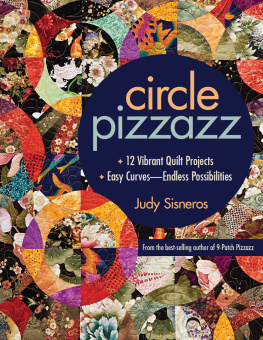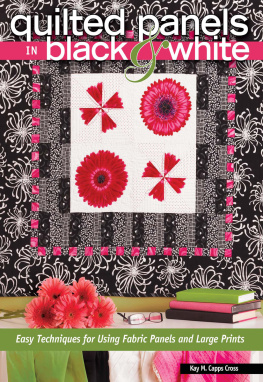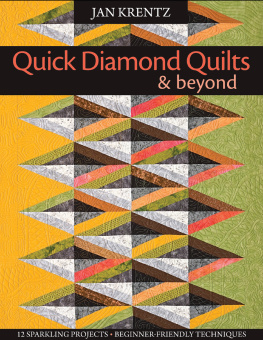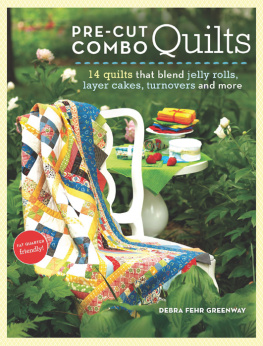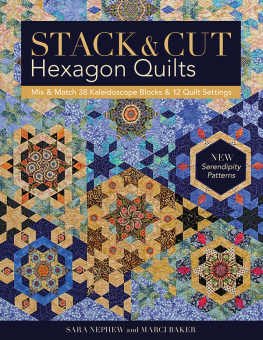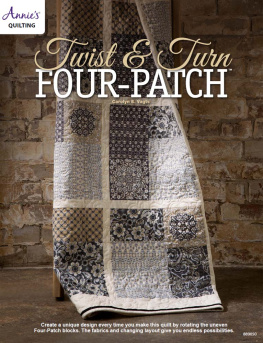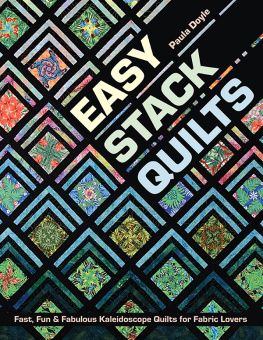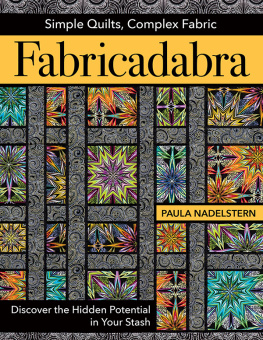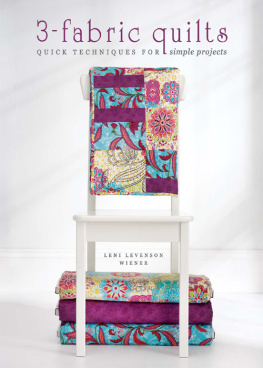Publisher: Amy Marson
Editorial Director: Gailen Runge
Acquisitions Editor: Jan Grigsby
Editor: Cyndy Lyle Rymer
Technical Editors: Ellen Pahl and Wendy Mathson
Copyeditor/Proofreader: Wordfirm, Inc.
Cover Designer: Kristen Yenche
Book Designer: Staci Harpole, Cubic Design
Illustrator: Kirstie Pettersen
Production Assistant: Tim Manibusan
Photography: Diane Pedersen and Luke Mulks unless otherwise noted
Published by C&T Publishing, Inc., P.O. Box 1456, Lafayette, CA 94549
Dedication
This book is dedicated to Ruth Breunig, who got me hooked on quilting; to Susie Ernst, who first hired me to teach in her shop; and to all my wonderful students, who encouraged me to write this book.
Introduction
H ave you ever bought a beautiful large-scale fabric that you just couldnt resist but had no idea how to use? How about a panel that seemed wonderful but that now just sits in your stash? This book will help you use those treasures.
Several years ago, I bought a half-yard piece of tiger fabric. I didnt want to chop the tigers into squares or rectangles, so I knew I had to figure out a way to use them intact. My quilting motto is Fun, Fast, and Finished, so something quick and easy was on my mind. I cut a 12" square and a few 6" squares and put them on my design wall. Then I chose several fabrics that had a jungle feel, all in a similar green, and went to work. The piece included three 12" squares and several 6" squares, along with Nine-Patch blocks of the various fabrics. The Nine-Patches blended so well, it was hard to find them! Everyone loved the quilt, so I knew I was onto something.
This style of quilt has been my most popular, and easiest, workshop. I call it the potato chip quilt, because you cant make just one! One student contacted me to say she has made 30 quilts, which is about how many Ive made. The quilts do not all look alike, as you will see, but the premise is the same: Each quilt is a combination of solid pieces of fabric and Nine-Patch blocks (with a few Rail Fence blocks thrown in as desired). You can make these quilts with florals, scenics, juvenile prints, home decorator designs, Asian prints, or novelty fabricsjust about anything with a medium- to large-scale design. You can piece together a wall quilt in a day, including cutting, design, and sewing!
Let me warn you: These quilts are addictive! Most of my students have gone on to make several.
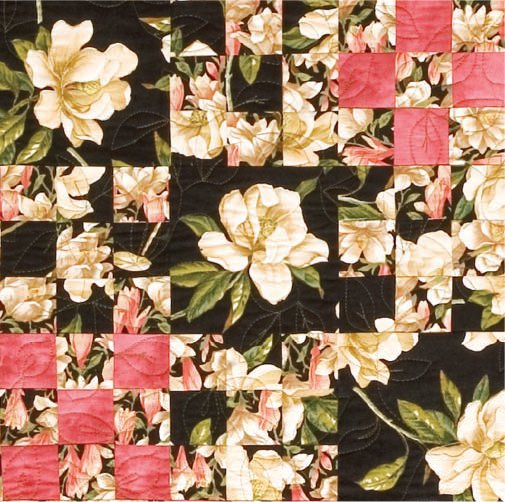
Magnolia, 44" x 50" Judy Sisneros, 2002. Full quilt on .
Anyone Can Make These Quilts
These are easy quiltsvery beginner friendly, but also fun for more experienced quilters. You can piece a wallhanging or lap quilt in one day. Many students have come to me after class and admitted that this was their very first workshop, and they were hooked!
You can use any large-scale fabric. The Nine-Patch blocks do the work: they either blend in with the larger squares and rectangles or contrast so the viewers eye moves diagonally through the quilt. The Nine-Patch is one of the most basic quilt blocks and one of the most fun to use. If you can cut strips, sew a straight seam, and measure, you can make one of these quilts! Remember, the large-scale focus fabric is the star, but the Nine-Patch blocks do the work!
You can make these quilts as wallhangings, lap quilts, or bed quilts. Try an on-point setting as well as a straight set. Examples of all are shown on the following pages. So gather some of your fabrics and enjoy!
Please read through all the chapters before beginning a project.
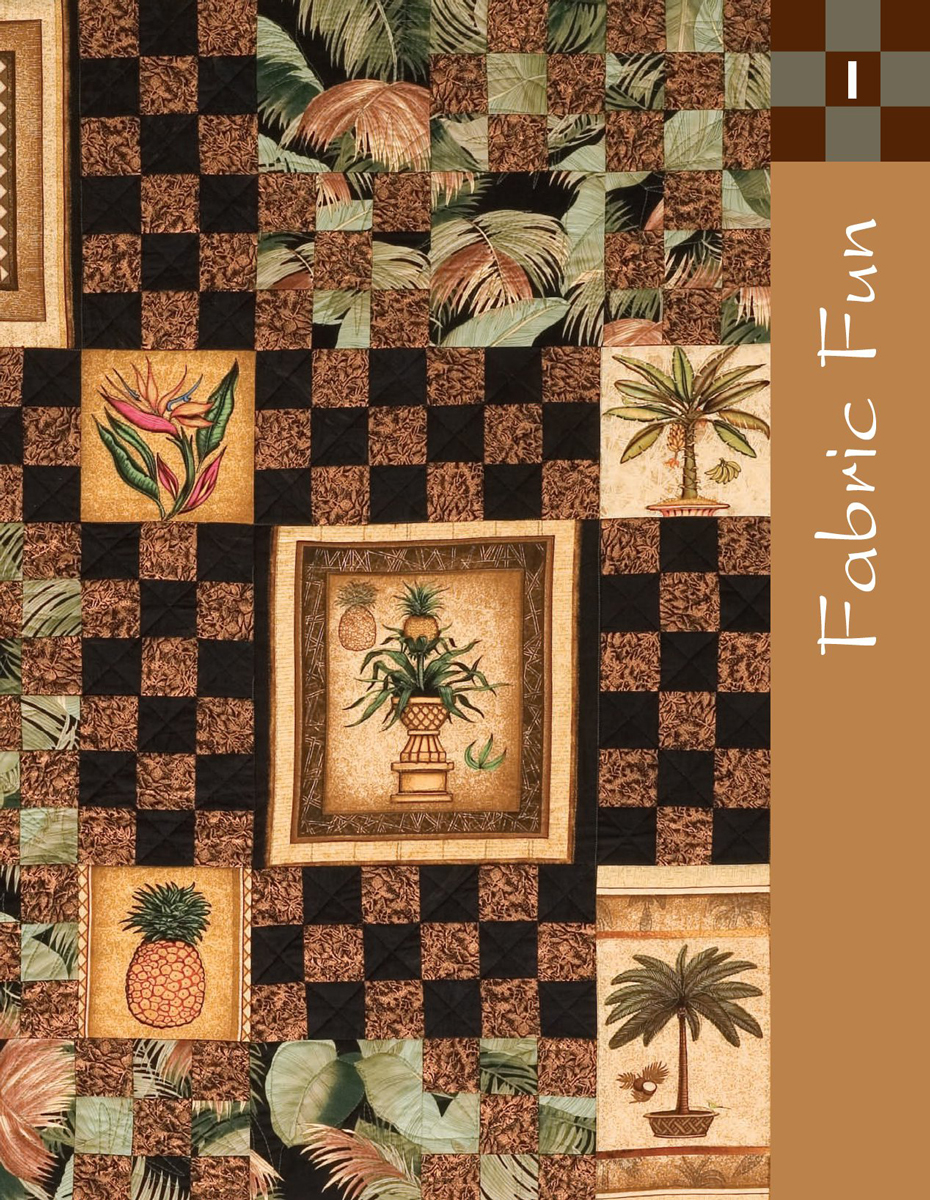

Palm Court, 50" x 56", Judy Sisneros, 2004. Machine pieced and quilted.
D oes the following scenario sound familiar? You bought a gorgeous large-scale fabric and have no idea what to do with it. If so, this is the book for you!
The Important First Step
Sometimes when you are in a quilt shop, a bolt of fabric will jump off the shelf and almost demand to go home with you. You may not have a particular quilt pattern in mind when you buy it, but you know you need it. If you are drawn to large-scale prints, get ready to use some of that stash!
Large-scale prints are fun to buy, but sometimes hard to use. You dont want to purchase a beautiful tiger print and then decapitate the tiger when you cut up the fabric. With this technique, you can use many types of large-scale fabrics. A large-scale print doesnt have to be hugea print that features a woman 4"6" tall is all right, but a figure 2" tall doesnt quite work.
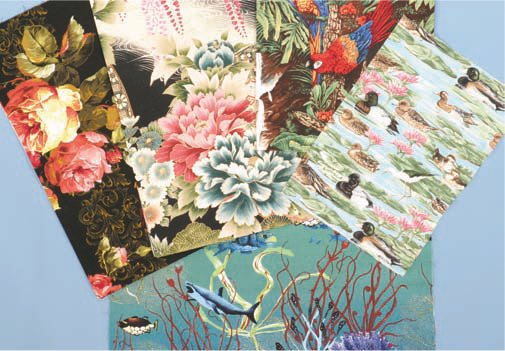
Examples of large-scale prints
For the quilts in this book, choose a focus fabric and a minimum of three companion fabrics. The basic recipe for making these quilts includes at least the following ingredients:
Two 12" x 12" squares of focus fabric
Two 6" x 12" rectangles of focus fabric
Seven 6" x 6" squares from focus and companion fabric
Nine-Patch blocks in at least two different fabric combinations
A few Rail Fence blocks, as desired (optional)
NOTE
One of the fabrics in one of the Nine-Patch strip sets should be the focus fabric.
Focus Fabric
The star of these quilts is the focus fabric. It is used in the large squares and rectangles, in some of the 6" squares, and in some of the Nine-Patch blocks. If you have enough fabric, you may choose to continue the focus fabric into the border (see, for example, Fall Into Winter, ).
Because it is the star, the focus fabric should be the first fabric you choose. It is best to choose a fabric that has several colors so you can include some of the colors in companion pieces. You will use the focus fabric in solid pieces and in the construction of the Nine-Patch blocks.
Suggested fabrics include:
Large floral designs
Landscape prints
Large juvenile prints
Asian designs
Seasonal prints (Christmas/Halloween/Autumn)
Animal prints
There is no one type of print that works best in this quiltall of the above work great. I only use 100% cotton fabrics. However, you may use a panel or decorator print that is not cotton. If you have a panel, or a piece brought back from a glorious vacation, see pages 910. A panel is a printed or painted piece of fabric with a specific design on it, such as a few large fish or a Japanese or African design.
TIP
Almost every rule mentioned in this book can be broken. I have seen this quilt done successfully with only black and white fabrics. If that is your choice, go for it!
Companion Fabrics
In general, for wallhangings or lap quilts, you will use three fabrics in addition to the focus fabric. If you use too many fabrics, the quilt may not flow well. Companion fabrics can blend with the main piece, creating a mooshy look, somewhat like the look of a watercolor quilt. On the other hand, if you use a high-contrast fabric as a companion fabric, it may dance through the quilt. One high-contrast fabric is good if you like the effect, but use only one, unless you are making a larger quilt. A combination of blended and contrasting fabrics works well.
You may use some companion fabrics in unpieced squares and rectangles, but only if the scale and color of the print will blend well with the focus fabric. If the fabric is a tone-on-tone or reads as a solid, use it only in the Nine-Patches.
Next page

